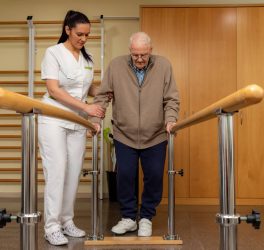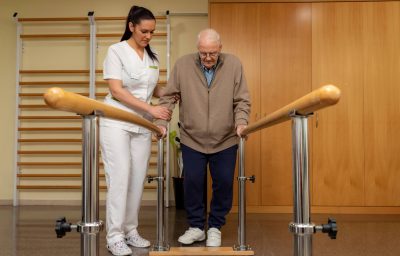
The analysis, led by an extensive collaboration of UK anaesthetists and involving University of Bristol researchers, included data from all NHS hospitals and some in the independent sector and received the support of more than 11,000 anaesthetists throughout the UK.
It is likely the largest and most in-depth study of the nature, causes and consequence of perioperative cardiac arrest — perhaps the complication of surgery feared most by patients, anaesthetists and surgeons. The analysis included a detailed review of more than 900 cases of perioperative cardiac arrest, of which 881 were included in the study.
Among an annual caseload of 2.71 million anaesthetics, the authors reviewed 881 cases of cardiac arrest between June 2021 to June 2022, reporting an incidence of 3 per 10,000 anaesthetics – lower than other studies from the USA (5.7 per 10,000) and Brazil (13 per 10,000) had estimated.
Incidence varied with patient and surgical factors. Compared with all surgeries, patients who had cardiac arrest were more frequently male (56%) while only 42% of all surgeries were in men. Increased risk was also shown for the very old and very young: 25% of cardiac arrests occurred in people over 75 years, while only 13% of patients were in this age group; and 8% of cardiac arrests occurred in children aged under 1 year, while only 1% of total patients were in this age group.
Compared with the overall population undergoing anaesthesia, those experiencing cardiac arrest were more often ill or had other significant medical conditions and less often healthy. Patients who were ill or had significant medical conditions (ASA physical status 4–5) accounted for 37% of cardiac arrests but only 4% of the surgical population, whereas healthy patients (ASA physical status 1-2) accounted for 26% of those who had a cardiac arrest and 73% of the surgical population.
Compared with the overall population undergoing anaesthesia, patients who had cardiac arrest were more likely to be undergoing emergency surgery (65% of cardiac arrests occurred during emergency surgery but only 30% of all cases were emergency). Similarly, 60% of the cardiac arrests happened during complex surgery while only 28% of cases were classed as complex. Timing of surgery also mattered: 14% of cardiac arrests occurred during the weekend (Saturday/Sunday), while only 11% of all surgeries were during the weekend; and 19% of cardiac arrests occurred out-of-hours (1801H-0759H), while only 10% of all surgeries were out of hours.
The highest number of cardiac arrests occurred during orthopaedic trauma surgery (12% of all cardiac arrests), major abdominal surgery (10%), cardiac surgery (9%) and vascular surgery (8%). When adjusted for the annual caseload in each specialty, those with the highest risk of cardiac arrest were cardiac surgery (9-fold excess risk), cardiology procedures requiring anaesthetic care (8-fold) and vascular surgery (4-fold).
The most common causes of cardiac arrest were major bleeding (causing 17% of cardiac arrests), very slow heart rate (9%), and cardiac ischaemia (lack of oxygen delivered to the heart) (7%). The authors explored whether the cardiac arrest was due to underlying patient chronic and current ill health or due to anaesthesia or surgery, finding that key factors were the patient’s condition in 82% of cases, anaesthesia in 40% and surgery in 35%. Examples of patient factors include frailty, severe underlying disease and bleeding; examples of surgical factors include complex surgery complicated by bleeding; and anaesthesia examples include a severe allergic reaction to administered drugs.
The authors explain that the study data “highlight a complex interaction of patient, surgical and anaesthetic factors in many perioperative cardiac arrests” also noting that “the cause of cardiac arrest varied widely in different surgical specialties.” The study also showed high rates of senior staff involvement in cases of cardiac arrest.
Reassuringly in healthy (ASA physical status 1) patients undergoing routine surgery, the study showed the rarity of cardiac arrest with this event occurring in fewer than 1 in 10,000 cases and death in 1 in 132,000.
Tim Cook, Honorary Professor in the School of Medicine at the University of Bristol and Consultant in Anaesthesia and Intensive Care Medicine at the Royal United Hospitals Bath NHS Trust, said: “The finding that in more than 80% of all cases, and three-quarters of those occurring at night, a consultant was present during induction of anaesthesia in those cases that had a cardiac arrest suggests efforts to match clinical staffing to patient and case complexity and risk. When a consultant was not present, another senior anaesthetist able to work autonomously was commonly involved.”
In a second linked study, the research team analysed data to address the outcomes for patients who had a perioperative cardiac arrest.
Rates of successful resuscitation were notably higher for perioperative cardiac arrest than is achieved in cardiac arrests that take place out of hospital or in hospitals in other settings such as a hospital ward. Among 881 patients who had a cardiac arrest, 665 were successfully resuscitated and of 742 in whom their hospital outcome was known 384 (52%) had survived. The extent to which those who were discharged made a good functional recovery was reported in 284 survivors using a scale called the modified Rankin score (mRS), with 249 (88%) having a good functional score (0-3).
Multiple factors influenced the extent of success of resuscitation including patient age, pre-existing health, surgical specialty, the heart rhythm at cardiac arrest and duration of resuscitation. Survival to hospital discharge was worse in patients at the extremes of age with 40% of patients aged over 75 years and 45% of babies aged under 1 month old surviving. Hospital survival was also poorer when surgery was urgent, with 88% patients undergoing routine surgery and 37% of emergency cases surviving to discharge.
When death occurred, it was judged to be an unpreventable process in 31% of cases. The quality of care was generally good with care during and after cardiac arrest judged good in 80% and poor in fewer than 2%. However, elements of poor care before cardiac arrest were identified in 32% of cases and are a focus of opportunities to improve care. Dr Jasmeet Soar, Consultant in Anaesthesia and Intensive Care at North Bristol NHS Trust, said: “As patients undergoing surgery have become older and less healthy in the last decade, and surgical care has ever more to offer, it is inevitable that major complications, including cardiac arrest will occur. It is clear from this study that outcomes from perioperative cardiac arrests are substantially better than from other causes of cardiac arrest. Most patients survive the cardiac arrest and of those who go home the vast majority make a good recovery.”
Professor Cook added: “It is notable that 80% of patients were successfully resuscitated and more than half managed to leave hospital. To put this in context, only 23% of patients who have a cardiac arrest elsewhere in hospital survive to leave and fewer than 10% of patients who have a cardiac arrest outside hospital are alive a month later. The higher survival rate is likely to be contributed to by being in a highly monitored environment and attended by a trained anaesthetist who can rapidly identify and respond to the causes of the cardiac arrest.”
Dr Richard Armstrong, an anaesthetist at Severn School of Anaesthesia and Wellcome GW4 Clinical Doctoral Fellow at the University of Bristol, concluded: “This study is important for clinicians and patients. For clinicians it provides a unique insight into the frequency, causes, contributing factors and outcomes of perioperative cardiac arrest. There are also areas identified for improvement. For patients, the project provides a rich resource of information which can be used to bettler inform them, so they can understand the risks and benefits of undergoing surgery and interventional procedures requiring anaesthesia.”
Dr Fiona Donald, President of the Royal College of Anaesthetists said: “For the first time, we have a clear, comprehensive and detailed picture of perioperative cardiac arrest in all NHS hospitals in the UK. Several million patients undergo surgery each year and this research shows they can have confidence that their risk of a cardiac arrest is very low. For the 1 in 3,000 patients who do experience it, the quality of care is high.
“NAP7 has huge potential to drive improvements in perioperative care. Alongside the wealth of in-depth data, the report also includes practical and accessible recommendations that will help us improve the prevention and treatment of perioperative cardiac arrest.”
The two research papers are by an extensive collaboration of anaesthetists across the UK, including Dr Richard Armstrong, Severn School of Anaesthesia and University of Bristol, Bristol, UK; Dr Jasmeet Soar, Consultant in Anaesthesia and Intensive Care, North Bristol NHS Trust, Bristol, UK and Professor Tim Cook, Consultant in Anaesthesia and Intensive Care Medicine, Royal United Hospitals Bath NHS Trust, Bath, UK and Honorary Professor, School of Medicine, University of Bristol, UK. The full report is a collaboration led by the Royal College of Anaesthetists (RCoA) and a full report is also published on the RCoA website.








